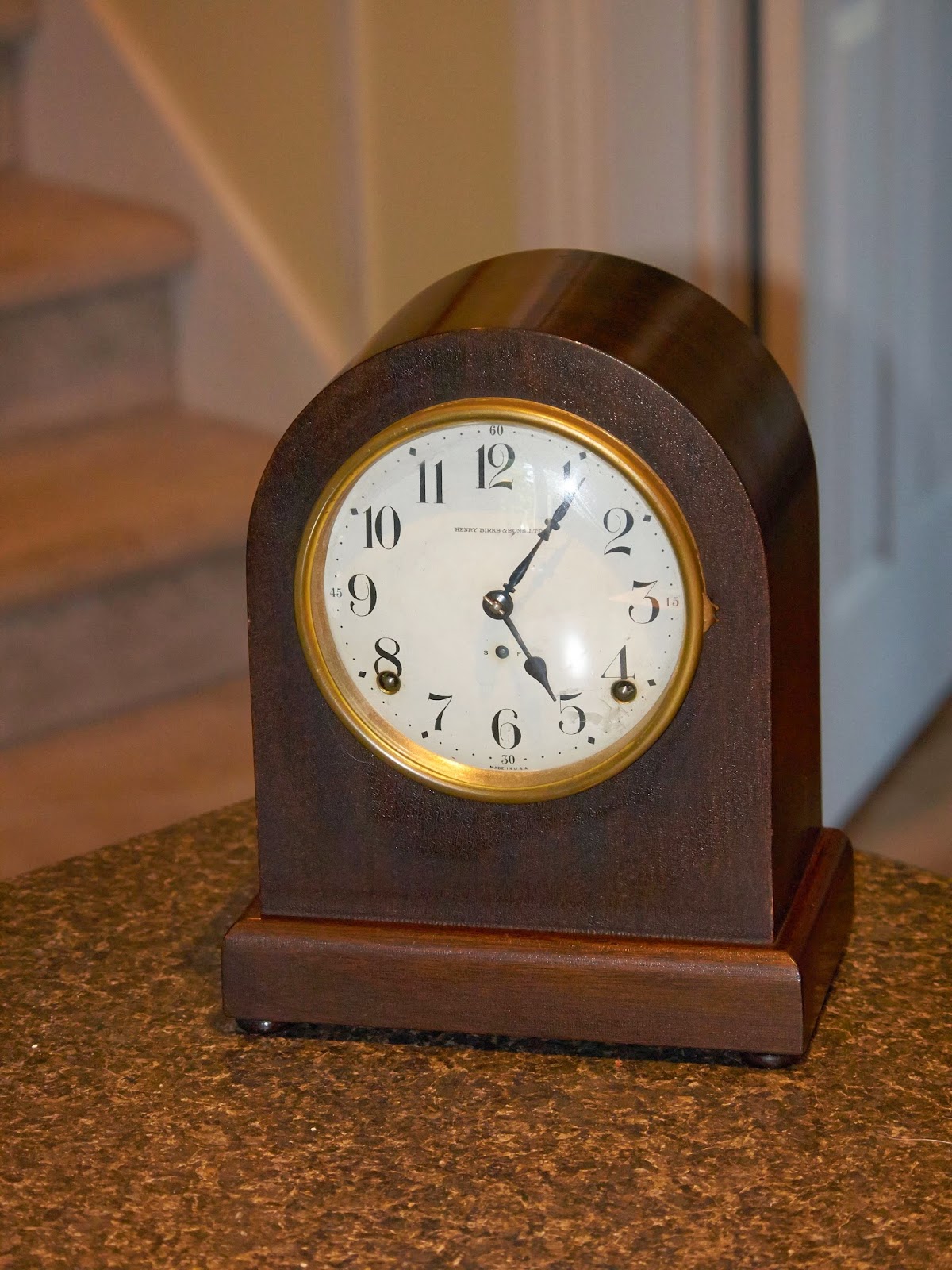Mantel Clock by Ingersoll-Waterbury
 |
| Ingersoll-Waterbury mantel clock |
The clock says that it was made in Canada but as is typical of clocks sold in Canada before and during the Second World War the movements were made in the US, assembled and shipped to Canada to be installed in cases that were sold as "made in Canada". This, I presume, was to avoid import tariff's. Other clock companies like Seth Thomas did exactly that. As far as I know from my research, the only clock company that made the movements and built their own cases was Arthur Pequegnat. It is no wonder that Pequegnat clocks command much higher prices today. A similar two train Arthur Pequegnat mantel clock would typically sell for about $450.00CDN.
 |
| Two train movement, time and strike with coiled gong |
It has a pendulum and standard escarpment. There is a small hole in the front for adjusting the speed of the clock but the key does not fit the hole leading me to believe that the key is not original. A winding key usually has a little box wrench on the other end for adjusting the speed.
I have other keys that might just fit. I have been bench-testing the clock for 12 hours now and it appears to be gaining about 5 minutes during that time. Curiously the label says that the pendulum is adjustable (it is not) but after looking at the label a second time I realized that it is likely the same label they put on a wide variety of clocks to save on printing costs.
 |
| Swinging front panel |
 |
| Original hands or added later? |
The case is in decent shape. The veneers on either side of the back panel are splitting but a clamp and carpenter's glue will fix that. Typically in clocks of this age there are pieces missing from the veneer, after all the manufacturer did not go to any great expense to build these things.
A little history. In 1922, the Waterbury Clock Company purchased the
Ingersoll operation whose business had begun to decline after 1910 and had
gone bankrupt two years previously due to poor management. Waterbury's
operation was particularly hard hit by the Great
Depression of the 1930s.
By 1932,
their huge factory complex was almost idle. They avoided
bankruptcy, but the firm was reorganized as the Ingersoll-Waterbury
Company with investors raising half a million dollars in new capital.
During this period the popular "Mickey Mouse" character watch was made
and electric clocks were added to the line thereby reviving the company.
After
America entered World War II, the Ingersoll-Waterbury Company switched
almost 100% to manufacturing war products. In 1942, the operation was
purchased by a group of Norwegian investors and a new factory was built
at Middlebury, CT. In 1944, the firm became known as United States Time
Corporation and introduced the popular "Timex" watch shortly after the
war. In November, 1969, U.S. Time was succeeded by Timex Corporation,
which continues business at Middlebury, CT. to this day. Ingersoll-Waterbury are therefore known more for their watch production than the production of clocks.
The Waterbury name has been around since 1857, however.
I hereby present my newly acquired Ingersoll-Waterbury time and strike mantel clock.



Comments
Post a Comment